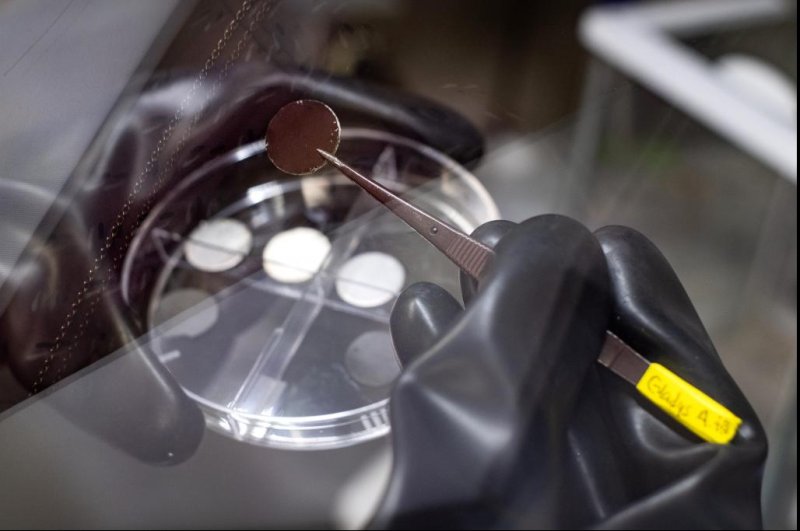Scientists at Rice University say they have come up with a technique to slow the degradation of batteries. Photo courtesy of Jeff Fitlow/Rice University
Oct. 26 (UPI) -- The inclusion of films of carbon nanotubes could be key in building a longer-lasting battery, scientists at Rice University said.
Led by chemist James Tour, the researchers used the nanotube films to come up with a way to halt the growth of dendrites on a battery's unprotected lithium metal anodes, Rice said in a news release Thursday. They published their results this month in the journal Advanced Materials.
The dendrites usually degrade batteries by reaching their cathodes, prompting consumers to avoid lithium batteries in favor of their lithium-ion counterparts because developers can slow dendrite growth in lithium-ion batteries by slowing their charge time, Tour said.
But Tour and his team determined that dendrite growth can be slowed in lithium batteries by using a simple technique that Tour said is highly effective.
"What we've done turns out to be really easy," he said. "You just coat a lithium metal foil with a multi-walled carbon nanotube film. The lithium dopes the nanotube film, which turns from black to red, and the film in turn diffuses the lithium ions."
After 580 charge and discharge cycles with a test battery, the researchers said, full lithium metal cells maintained 99.8 percent of their coulombic efficiency, a phrase used to express the effectiveness at which electrons move in an electrochemical system.
The film was able to maintain a steady level of ions to control dendrite growth by intaking ions from the underlying lithium anode while others were discharged.
"Physical contact with lithium metal reduces the nanotube film, but balances it by adding lithium ions," Rice postdoctoral researcher and paper co-lead author Rodrigo Salvatierra said. "The ions distribute themselves throughout the nanotube film."















